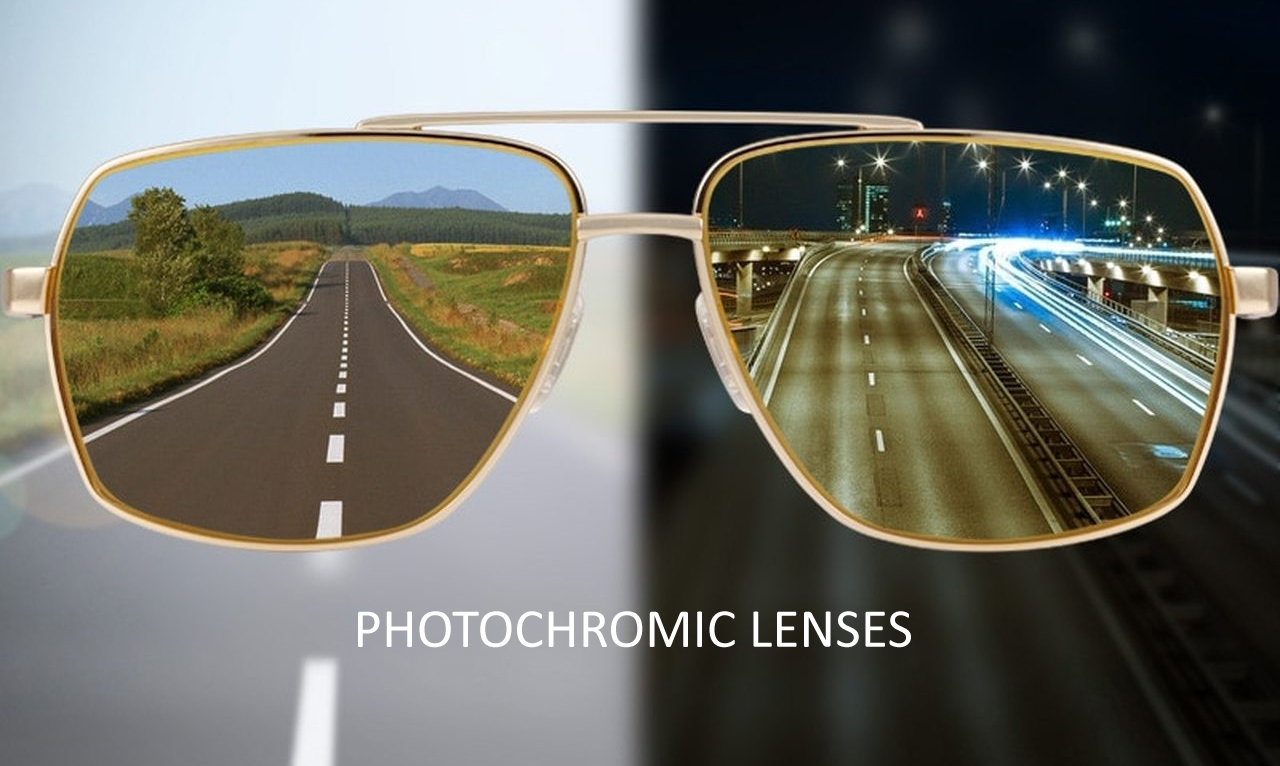Photochromic Lenses
Fast Dark, Fast Clear: Adaptive lenses for a better and comfortable vision
How Do They Work
Also, known as self-tinting lenses, photochromic lenses tend to darken when exposed to UV light but are otherwise nearly clear when in an indoor environment. And, that is why they are sometimes called variable tint lenses and light-adaptive lenses.
The Technology
Upon the exposure of sun’s UV rays, the molecules (of silver chloride or another silver halide) inside these lenses get activated, causing darkening of the lenses. Since, the molecules are self-tinting molecules, they tend to change their structure when exposed to light conditions.
But, when you are in an indoor environment, the UV rays get blocked and unable to enter inside which allows photochromic glasses to stay in their original state of transparency.

Duration Of Transition In Color
Usually, photochromic lenses darken in less than a minute after getting exposed to UV light and over the next ten to fifteen minutes, they become even darker. In the absence of UV light, these lenses become clear within a span of just two minutes and over the next fifteen minutes, they come back to their transparent state.
BENEFITS OF USING PHOTOCHROMIC LENSES
Whether you are going for photochromic eyeglasses frames or sunglasses, these special ophthalmic lenses offer you with the following benefits:
- Highly adjustable to indoor and outdoor environments
- Offer protection to eyes from harmful UVA and UVB rays of the sun
- You don’t have to carry an extra pair of prescription glasses or spectacles, as these are designed to work with most frames and prescriptions
- Photochromic lenses are anti-scratch, durable, repel dust particles and water-resistant
- They are distortion-free, so work even in the rains
- Ideal for every one including children
Why Do You Need Photochromic Glasses?
Because of your lifetime exposure to sunlight and harmful UV rays, there are high chances of developing cataract and other eye problems in future. And, so it is advised that you should opt for photochromic glasses or any eyewear with such type of lenses.